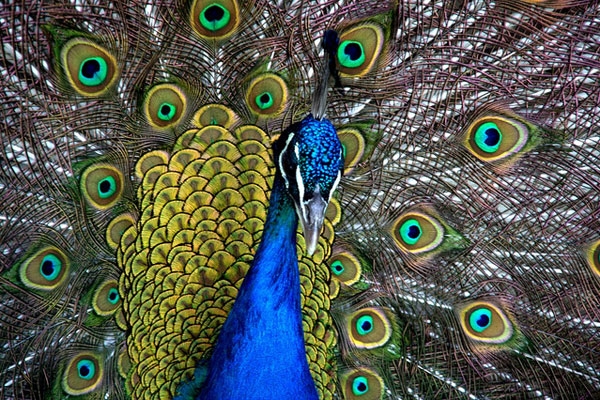
Question sent by MARTA ARENAS (Valencia). GUILLEM PÉREZ I DE LANUZA answers:
Certainly, birds do show a wider colour diversity than mammals. What’s more, colours in birds are brighter and more complex than in mammals. However, these differences are not only visible when comparing us to birds, but also when comparing mammals to fish and lizards. In broad strokes, two key elements explain these differences: first, the differences in sensory capabilities involved in colour vision between the different groups of vertebrates; and second, the functions and uses associated with the coloured features of animals, both the animals showing these features and those seeing them.
Regarding the distinction of colours, mammals, compared to birds, lizards or most fish, have a fairly poor system of colour vision. Probably, humans and primates have a (relative) advantage over other mammals, considering that our perception of colours consists on a trichromatic colour vision based on three different kinds of cells that are sensitive to colour —the cones. However, most mammals have a dichromatic colour vision, or else, they can’t differentiate colours. However, other vertebrates have a visual system based on four different cones that is potentially tetrachromatic. This system enables them to differentiate many more colours than we do, including a part of the light spectrum we are unable to perceive —the ultraviolet spectrum (UV rays). Consequently, differences are quantitative as well as qualitative.
These differences are not the product of chance, in fact, they are closely linked to the evolutionary past of every species as well as to the light features of the environment they live in. For instance, many mammals are nocturnal or crepuscular, or at least their ancestors were. In this kind of environment, where light intensity is so low, differentiating colours is not very useful. On the contrary, evolution has been prone to select alternatives to colour vision. For instance, scotopic vision, which is sensitive to very low light levels, but blind to colour. It has also enhanced other sensorial systems, like chemoreception. However, most birds are diurnal, and the high light intensity found in their environments, enable them to visually take advantage of many kinds of resources, even the colours in their body, which help them to identify and communicate with each other.
Therefore, birds and mammals have very different selective regimes depending on the functions of the colours in their bodies. Evolutionary pressures linked to natural selection, like the need to avoid predators, determine colour patterns in mammals. Because they don’t need bright colours (which in fact would be counterproductive), mammals don’t develop these patterns. In contrast, many colour features in birds are used as social signs that transmit information. These signals are frequently under evolutionary pressures linked to sexual selection, this so special driving force of evolution. Usually birds use their colours to attract mates or repel rivals. Colours also identify sex, age and compatibilities. Therefore, birds tend to have striking and complex colour patterns, with contrasted colour patches. Some birds even have iridescent colours, which look different depending on the angle of incident light and the angle of vision.
Finally, the fact that birds (and lizards as well as many fish) are able to perceive UV light poses this question: does colour diversity also exist in the UV spectrum? The answer is yes. In fact, many bright and complex colours either reflect or absorb UV rays. So, what for us can be just one single colour, for a bird can include more than one. As a matter of fact, many studies have demonstrated that there are sexual, age or other differences in feathers that can be only seen in the UV spectrum. These differences had passed unnoticed for humans until very recently.
One more difference we should take into account: while colours in mammals are produced almost exclusively by a family of pigments —melanins— in bird feathers (as well as in fish and lizard scales) we find much more complex mechanisms of colour production. Feathers and scales show other kind of pigments rather than melanin, like pteridines and carotenoids, which produce red and yellow. In addition, they produce colours based on the dispersion of light caused by some nanostructures, resulting in structural colours such as blue, ultraviolet as well as iridescent coloration. Therefore, bird feathers are more versatile when producing colours than our skin or fur.
To sum up, the selection forces that usually participate in bird, fish and lizard coloration enhance striking and more diverse patterns than in mammals. This difference is actually bigger than we are able to perceive —for them, they are even more diverse and conspicuous.
Guillem Pérez i de Lanuza. Laboratory of Etology, Institut Cavanilles de Biodiversitat i Biologia Evolutiva, Universitat de València.





